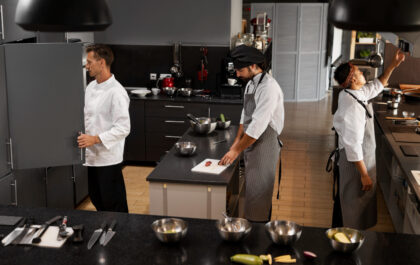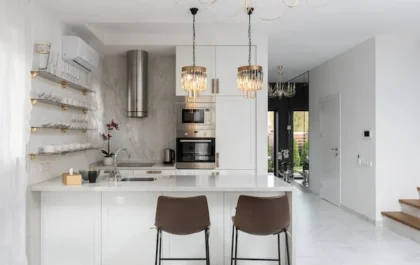
Beauty standards have always been a prominent aspect of human society. Throughout history, these standards have evolved and changed, reflecting the cultural and societal norms of each era. In this blog article, we will take a journey through time to explore the fascinating evolution of beauty standards from ancient civilizations to the modern age. Brace yourself for a rollercoaster ride of intriguing anecdotes, random facts, and thought-provoking insights!
Ancient Beauty Ideals: Of Gods and Mortals
In ancient civilizations such as Egypt, Greece, and Rome, beauty was closely associated with divinity. The gods and goddesses were depicted as flawless beings with symmetrical features and ideal proportions. Mortals, inspired by these divine figures, sought to emulate their appearance through various beauty practices. From elaborate hairstyles adorned with jewels to intricate makeup techniques, the ancient people spared no effort in their pursuit of beauty.
Medieval Beauty: Pale Skin and Plucked Eyebrows
The medieval era brought its own set of beauty standards. Fair, porcelain-like skin was highly coveted, as it was associated with the nobility who did not have to toil under the sun. Women would go to great lengths to achieve this pale complexion, using a variety of concoctions and powders. Additionally, plucked eyebrows were a popular trend, with women often removing their natural brows and drawing thin, arched lines instead.
Renaissance: The Ideal of the Full-Figured Woman
With the Renaissance came a shift in beauty standards. The ideal woman was no longer portrayed as thin and delicate but as voluptuous and curvaceous. Artists like Rubens celebrated the beauty of fuller figures, emphasizing roundness and softness in their paintings. This new aesthetic ideal influenced the fashion industry, with corsets and wide skirts accentuating the natural curves of women.
Victorian Era: The Cult of Femininity
The Victorian era is often associated with strict societal norms and elaborate fashion. Beauty standards during this time focused on women being delicate, modest, and feminine. Pale skin, rosy cheeks, and small waists were deemed desirable. The use of corsets reached its peak, as women squeezed themselves into these restrictive garments to achieve the coveted hourglass figure.
The Roaring Twenties: The Flapper Revolution
In the 1920s, the beauty standards took a drastic turn. The flapper style emerged, representing a new sense of freedom and rebellion. Women cut their hair into short bobs, wore bold makeup, and flaunted their legs with shorter hemlines. This liberated androgynous look challenged traditional notions of femininity and celebrated individuality.
Modern Beauty: Diversity and Self-Acceptance
As we move into the modern age, beauty standards have become more inclusive and diverse. Society has started embracing different body types, ethnicities, and gender identities. The focus has shifted towards self-acceptance and celebrating individual beauty. Beauty brands are now promoting a more realistic and inclusive image, showcasing models of various backgrounds and sizes.
Conclusion
The evolution of beauty standards is a testament to the ever-changing nature of society and culture. Throughout history, ideals of beauty have been shaped by a variety of factors, from religious beliefs to social norms. As we continue to move forward, it is crucial to embrace diversity and promote self-acceptance, recognizing that beauty comes in many forms. So, let us celebrate the beauty within ourselves and others, appreciating the uniqueness that each individual brings to the tapestry of humanity.
Related posts
Subscribe for newsletter
* You will receive the latest news and updates on your favorite celebrities!
Benefits of Outsourcing Your Commercial Kitchen Services
Outsourcing commercial kitchen services is becoming increasingly popular among restaurant owners and food service providers. It is a cost-effective way…
Where to Get the Most Exclusive Bedworld Discount Code for Your Next Mattress Purchase
Looking for a new mattress but don’t want to pay full price? Look no further than vouchercabin.uk for the most…
Why Hiring a House Deep Cleaning Service is Essential for Your Home
Maintaining a clean and tidy house is essential for a healthy and happy life. However, with our busy schedules and…
The Importance of Regular Carpet Cleaning- Expert Guide
Carpet is an important component of interior design. Not only does it enhance the aesthetics of a room, but it…
How to Buy the Right Paint Color
When it comes to home improvement, the color palette is just as important as the design itself. It is a…
產品經理的職業前景和發展機會:探索未來的職業道路
介紹 產品經理是一個充滿潛力和發展機會的職業。隨著科技和市場的不斷變化,產品經理的職業前景也越來越廣闊。本文將探討產品經理的職業前景和發展機會,幫助您探索未來的職業道路,為職業發展做好充分準備。 產品經理的職業前景:不斷增長的市場需求 隨著企業對產品創新和市場競爭力的重視,產品經理的市場需求不斷增長。產品經理在企業中的重要性越來越突出,成為企業戰略規劃和產品創新的核心角色。這種趨勢為產品經理提供了廣闊的職業發展空間和豐富的職業機會。 職業發展機會:多樣化的職業道路和晉升空間 產品經理的職業發展機會多樣化,包括晉升到高級產品經理、產品總監、甚至首席產品官等高級管理職位。此外,產品經理還可以向其他相關領域發展,如市場營銷、業務發展和戰略規劃等。這些職業道路和晉升空間為產品經理提供了更多的發展選擇和挑戰。 提升職業競爭力:持續學習和自我提升 要在產品經理的職業道路上取得成功,持續學習和自我提升是必不可少的。參加專業培訓和認證課程,獲取最新的行業知識和技能,並通過實踐積累豐富的經驗,能夠有效提升您的職業競爭力。此外,積極參加行業活動和網絡交流,拓展職業人脈,也有助於您的職業發展。 結論 產品經理的職業前景和發展機會非常廣闊,只要您有明確的職業目標和持續的努力,就能夠在這一職業道路上取得成功。希望本文提供的建議能夠幫助您探索未來的職業道路,實現職業發展的目標,成為一名優秀的產品經理。
Glasgow’s Property Pundits: Navigating Real Estate Excellence with Your Trusted Estate Agent
In the kaleidoscopic world of Glasgow’s real estate, finding your way through the myriad options and opportunities requires the expertise…
The Ultimate Guide to Hiring a Home Remodel Contractor
Introduction Embarking on a home remodeling project is an exciting yet intricate endeavor. Whether it’s revamping a kitchen, expanding a…
Kitchen and Bath Installation in Toronto: Everything You Need to Know
If you’re planning a kitchen or bathroom renovation in Toronto, one of the most important decisions you’ll make is choosing…
The Timeless Elegance of PERMACHEF Chef Hats
Are you tired of the same old boring chef hats? Looking for a touch of elegance and style in your…









